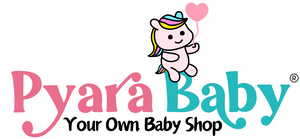An Age-Wise Guide to Montessori Toys for Kids
In the journey of early childhood development, toys play a pivotal role. They're not just objects of entertainment but tools for learning and exploration. Montessori toys, inspired by the educational philosophy of Maria Montessori, are designed to foster independence, creativity, and cognitive growth in children. Let’s explore the essence of Montessori toys wherein we will try to provide an age-wise guide to help parents choose the right toys for their little ones.
toys, inspired by the educational philosophy of Maria Montessori, are designed to foster independence, creativity, and cognitive growth in children. Let’s explore the essence of Montessori toys wherein we will try to provide an age-wise guide to help parents choose the right toys for their little ones.
 Understanding Montessori Toys: Montessori toys are characterized by their simplicity, natural materials, and focus on hands-on learning. They are designed to encourage children to engage in activities that promote sensory exploration, problem-solving, and fine motor skills development. Unlike conventional toys that often have predefined uses or functions, Montessori toys are open-ended, allowing children to use them in various ways according to their imagination and developmental stage.
Understanding Montessori Toys: Montessori toys are characterized by their simplicity, natural materials, and focus on hands-on learning. They are designed to encourage children to engage in activities that promote sensory exploration, problem-solving, and fine motor skills development. Unlike conventional toys that often have predefined uses or functions, Montessori toys are open-ended, allowing children to use them in various ways according to their imagination and developmental stage.
Age-Wise Guide to Montessori Toys:
- Infants (0-12 months):

- Montessori Mobiles: These simple, aesthetically pleasing mobiles help stimulate an infant's visual and cognitive development. They encourage focus, tracking, and depth perception.
-
Grasping Toys: Soft, textured toys that are easy to grasp help infants refine their motor skills and hand-eye coordination.

- Rattles and Teething Toys: Natural wooden rattles or silicone teething toys provide sensory stimulation and relief during teething.
- High contrast flashcards: These flashcards aid baby’s visual development and are a powerful learning tool for babies.
- Toddlers (1-3 years):
-
 Stacking and Nesting Toys: Toys like wooden stacking rings or nesting cups promote spatial awareness, coordination, and problem-solving skills.
Stacking and Nesting Toys: Toys like wooden stacking rings or nesting cups promote spatial awareness, coordination, and problem-solving skills. - Puzzles: Simple puzzles with large, chunky pieces are perfect for toddlers to develop their cognitive skills, shape recognition, and hand-eye coordination.
-
Sensorial Materials: Montessori
 sensorial materials such as sensory bins filled with rice or beans, textured balls, or fabric squares encourage exploration of different textures, sizes, and shapes.
sensorial materials such as sensory bins filled with rice or beans, textured balls, or fabric squares encourage exploration of different textures, sizes, and shapes. - Busy Boards: Busy boards are essential toys for toddlers to encourage independent playing along with giving them the necessary life skills, like opening and closing zippers, bolts, tying shoes laces among others.
-
Pretend Play: Toddlers love to imitate whatever they see or
 experience in their real life and are really invested in pretend-play. It gives them life skills in a practical and fun way too.
experience in their real life and are really invested in pretend-play. It gives them life skills in a practical and fun way too.
- Preschoolers (3-6 years):
-
Building Blocks: Wooden building blocks in various shapes
 and sizes allow children to explore concepts like balance, symmetry, and construction while fostering creativity and spatial reasoning.
and sizes allow children to explore concepts like balance, symmetry, and construction while fostering creativity and spatial reasoning. - Art Supplies: Non-toxic art supplies like crayons, watercolors, and clay encourage self-expression, creativity, and fine motor skill development.
- Nature Exploration Kits: Kits containing magnifying glasses, tweezers, and containers for collecting natural objects promote curiosity, observation skills, and appreciation for the natural world
-
 Activity books: Activity books on various topics are great Montessori material for a hands-on learning experience for kids.
Activity books: Activity books on various topics are great Montessori material for a hands-on learning experience for kids.
Conclusion: Montessori toys are not just playthings; they are tools for holistic development. By providing children with toys that align with the Montessori philosophy, parents can support their child's growth across various domains, including cognitive, social, emotional, and physical development. The essence of Montessori toys lies not in their complexity but in their ability to inspire curiosity, independence, and a love for learning in children. Choose wisely, and watch your child thrive!



2 Comments